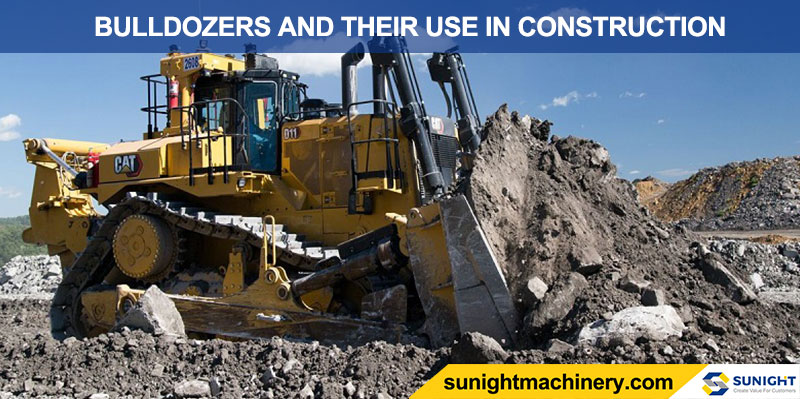Bulldozers are essential pieces of heavy equipment used in numerous industries and applications, including construction, mining, agriculture and landscaping. Dozers are characterized by their tractor-style body and metal plate blade at the front. Some models may also have an attachment at the back to perform various other functions such as digging. The most common attachment is the ripper, which functions like a giant claw. Dozers run on heavy-duty tracks to provide better grip and mobility on uneven terrain.
Dozers, also known as Bulldozers are strong machines that are usually used for tasks like pushing, digging, excavating, and leveling materials like soil and debris at various work sites. This versatility of the bulldozer makes it a common site at worksites across the Middle East. In most cases, bulldozers usually come with the large, heavy blade in the front that is used to push material. In some cases, you would have bulldozers with certain other modifications like rippers in the rear that helps to break down the tough ground. In the following post, we would look at bulldozers in general and their applications and uses.
Bulldozers are often used in different types of terrain, thanks to their sturdy design. Bulldozers are often differentiated based on the features like their blades, rippers, and whether tires or tracks are used. So, let us look at some of the individual parts of the bulldozer.
A ripper is basically extended attachment which is at the rear of the bulldozer that resembles a claw. They are used to break up land, break down any rock and earth to be moved. Your bulldozer can either have a single-shank ripper or a multi-shank ripper depending on your project needs.
A bulldozer’s final drive is one of the most critical parts of a bulldozer. Modern-day final drives distribute the load evenly over multiple gear teeth and also lift the drive motor away from suspension.
The bulldozer’s cab is also an important part of this machine as it is where the operator would control the machine. Different features are used for some cabs as that increases both its level of comfort and safety. Your cab ideally should reduce sound and absorb impact while you are moving around the work site as that is quite important when it comes to comfort. Comfort is crucial since operators can spend hours at a time inside the cab.
Tracks and tires determine the bulldozer’s mobility. Tracks are ideal for navigating hard, uneven terrain. On the other hand, tires are better suited for soft ground. You should also go for tires if you’re working in a sensitive area that you don’t want to damage easily.
Bulldozers generally come with high-powered engines since they move loads of heavy material around the worksite, all throughout the day. There are modern engines that fulfill different needs, all at the same time. For example, some newer engines produce fewer emissions compared to older engines to comply with certain EPA requirements, whilst not compromising on the performance.
The push frame is critical when it comes to positioning materials for different tasks. This part of your bulldozer would be responsible for moving the blade.
As said before, the blade is the heavy metal plate located at the front of the bulldozer. It is generally used to push and dig through materials. We have also talked about how different types of blades are better suited for specific projects.
When you are looking to buy or rent a bulldozer, you need to choose the one that improves the efficiency of your project. So how should you do it? Well, you need to consider a few things. Let us look at the following questions, answers to which would help you choose the right bulldozer for your next project.
Identify its purpose: You need to know the purpose for which you are looking to use the bulldozer. Are you leveling earth? Pushing material?
Analyze the worksite: The work site would set the demand for maneuverability. Do you need to maneuver in tight spaces? If you have tight spaces then you need to go for the one that gives you better handling.
The nature of the terrain: Are you working on a hard or soft surface? The terrain would determine the type of drive your bulldozer should have, and also the type of blade.
Know the material types: What type of earth are you moving to? What is its density? Answers to these would help you choose the right blade and the right engine
You do have several options in bulldozers that can fulfill most of your hauling, pushing, and leveling needs. You would need to do a little bit of research and familiarize yourself with each unique feature of the dozer, as this will greatly benefit your job site.